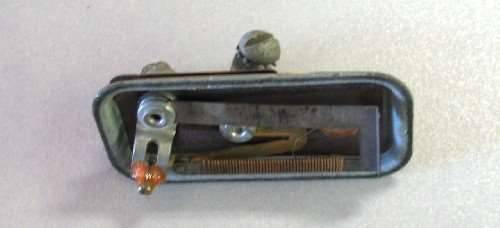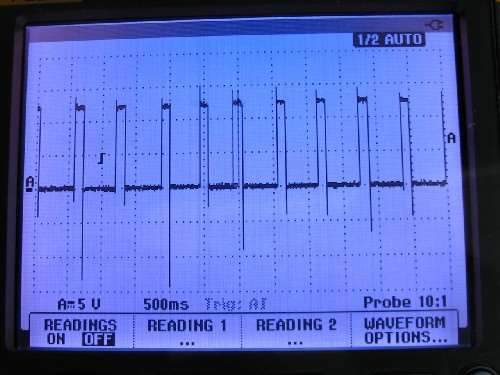Re: 12volt conversion voided clock, radio, fuel gauge function
Posted by HH56 On 2014/7/6 22:14:09
The 12V 1955 Packards used a Ballast resistor on the firewall to supply 8V to the instruments, which were basicall 6Volt instruments.
I hate to disagree but the ballast resistor on the firewall is for the coil. The instruments used a voltage regulator behind the cluster. It is a thermal pulse type regulator providing short bursts of 6 or 12v to the instruments. The duration of the pulses are determined by a set of contacts which are opened and closed by heating a bimetal element in the regulator. The element heats, bimetal bends and closes contacts to provide voltage out and at the same time breaks contacts providing the voltage to the element so it cools and contacts open again. The cycle repeats. Because of the pulses, the average voltage output to the instruments works out to around 5v.
Different regulator for 51-3 but the 54 6v cars used the same regulator as 55-6 12v cars to provide the 5v. The only difference in operation is because there is less voltage to control, the pulse duration is longer for 6v cars.
Since the 51-6 instruments are also thermal, the needles do not respond fast so the pulses are not visible. Some of the older gauges (35-??) including the one in question are magnetic and would not work with this type regulator. I believe Ford used the same type for some of the time but there are some solid state conversions to eliminate the contact type regulators on the market which put out a constant 5v.
A ballast resistor could certainly be used and may not be a bad idea.
For anyone who is interested, here is the inside of the 51-6 regulator plus the output for a 12v supply as viewed on an oscilloscope. With the 12v supply, pulse duration is approx 100 mv or 1/10 of a second.
Attach file:
 (49.58 KB)
(49.58 KB)

 (93.11 KB)
(93.11 KB)

I hate to disagree but the ballast resistor on the firewall is for the coil. The instruments used a voltage regulator behind the cluster. It is a thermal pulse type regulator providing short bursts of 6 or 12v to the instruments. The duration of the pulses are determined by a set of contacts which are opened and closed by heating a bimetal element in the regulator. The element heats, bimetal bends and closes contacts to provide voltage out and at the same time breaks contacts providing the voltage to the element so it cools and contacts open again. The cycle repeats. Because of the pulses, the average voltage output to the instruments works out to around 5v.
Different regulator for 51-3 but the 54 6v cars used the same regulator as 55-6 12v cars to provide the 5v. The only difference in operation is because there is less voltage to control, the pulse duration is longer for 6v cars.
Since the 51-6 instruments are also thermal, the needles do not respond fast so the pulses are not visible. Some of the older gauges (35-??) including the one in question are magnetic and would not work with this type regulator. I believe Ford used the same type for some of the time but there are some solid state conversions to eliminate the contact type regulators on the market which put out a constant 5v.
A ballast resistor could certainly be used and may not be a bad idea.
For anyone who is interested, here is the inside of the 51-6 regulator plus the output for a 12v supply as viewed on an oscilloscope. With the 12v supply, pulse duration is approx 100 mv or 1/10 of a second.
Attach file:
 (49.58 KB)
(49.58 KB)
 (93.11 KB)
(93.11 KB)
This Post was from: https://packardinfo.com/xoops/html/modules/newbb/viewtopic.php?post_id=146460